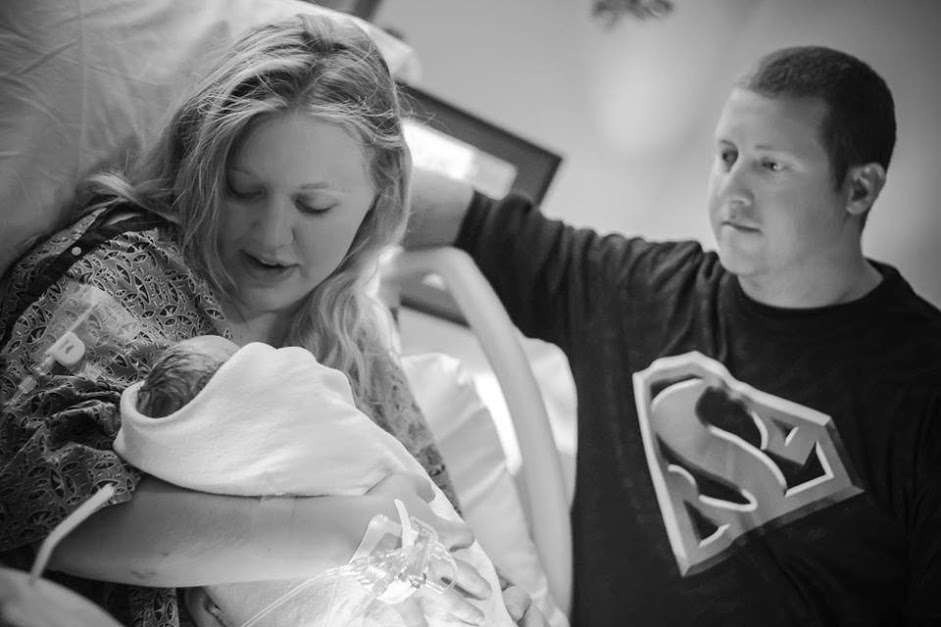The Epidural Risk No One Warns You About
We had talked about the risks, options and pain medication alternatives with the doctor. I had an epidural with my first daughter for labor pain so why would the second be any different? There was one epidural risk no one ever mentioned.
Understanding the Epidural: A Popular Choice for Pain Relief During Labor
An epidural is a form of anesthesia that can significantly reduce pain in the lower part of your body during medical procedures, typically used during labor. Administered by a healthcare provider into the epidural space of the spinal cord, this procedure involves a very thin tube or epidural catheter through which pain relief medications are delivered.
How Does an Epidural Work?
The epidural works by blocking pain signals transmitted to the brain. A local anesthetic or numbing medicine, possibly combined with other pain medication, is injected via an epidural needle into the epidural space just outside the dura mater that envelops the spinal nerves.
The goal is to alleviate discomfort primarily in the lower half of your body, which is particularly beneficial during the first and second stages of labor.
Benefits and Considerations
Epidural anesthesia is widely chosen for pain management in labor and has a reputation for effectiveness in making the birthing process less painful. It allows many women to remain fully alert yet comfortable during delivery.
However, it’s a personal decision and part of a birth plan that should be discussed with a healthcare provider. Unlike general anesthesia, patients remain conscious and can often move around, albeit with assistance.
While epidurals are generally safe, they come with potential risks such as low blood pressure, severe headache due to leakage of spinal fluid (a rare side effect), and, on very rare occasions, permanent nerve damage. The placement of the catheter can also cause technical problems or chronic pain, though such complications are uncommon.
Common Myths and Realities
Contrary to common myths, epidurals do not increase the duration of labor significantly, nor do they always result in a caesarean section. The American Society of Anesthesiologists and the American College of Obstetricians note that with careful management and monitoring of the amount of medication administered, most women can achieve sufficient pain relief with minimal side effects.
Epidural steroid injections are also used for pain relief in conditions like chronic back pain, demonstrating the versatility of epidural techniques in pain management beyond obstetric anesthesia.
Making Your Choice
Deciding whether to use an epidural anaesthesia during labor is a significant decision that requires understanding both the benefits and potential risks. Discussing thoroughly with your health care provider, considering your health conditions, and weighing your pain relief options are crucial steps to ensuring you choose the best form of pain management for your needs during labor.
By staying informed and considering all aspects of epidural anesthesia, you can make a decision that aligns with your personal health preferences and medical history, helping to ensure a safer and less painful birthing experience.
Second Epidural, Different Experience
With my second daughter, I had already spent the night in the hospital after being administered Cervadil. It was a planned induction, just like with my first. I was past forty weeks pregnant and ready to meet my baby girl. After a couple hours of mild contractions, but no real progress, the doctor devised a plan. I would get the epidural first and then she’d break my water. Easy enough.
The anesthesiologist came in and prepared me for the epidural process. I knew it would be a little painful. But hey a brief period of discomfort for a labor free from intense pain, I’d take it. But this time it took longer, a lot longer. Upon completion, he informed me that a ‘wet tap’ or ‘spinal tap’ occurred. This was an epidural risk that he explained didn’t happen very often.
What is a Wet Tap?
A ‘wet tap’ is when there are multiple pokes into the fluid sack around the spinal cord which causes some of the fluid to leak out. In my case, there was not enough space in between the vertebrae for the epidural upon first insertion. This caused the anesthesiologist to make a second insertion further down my back.
The anesthesiologist explained that in some cases this could cause a spinal headache, but usually not for 24-48 hours. He also said he only ever has one wet tap (if that) per year and it’s not common for someone who’s experienced. Lucky me.
I didn’t feel the effects of a headache, so I put the notion out of my mind. After all, I had a baby to deliver. About 5 hours of labor and 20 minutes of pushing later and I was holding my beautiful 9lb 6oz baby girl. I had a quick and easy delivery and two glorious hours of cuddling and nursing my sweet baby before it was time to get cleaned up. Shortly after getting out of bed to shower, I began feeling really dizzy. My head was pounding.
I returned to my bed and laid completely flat since that was the only position that provided some relief. Upon speaking to the nurse, she recommended I consult with the anesthesiologist. He came back in to discuss the headache symptoms. Apparently the relief of laying flat was a sure sign that it was indeed a spinal headache. He informed me that the best solution would be a blood patch.
What is a Blood Patch?
An epidural blood patch is a procedure that uses blood drawn from your arm in order to close holes in the fluid sack of the spinal cord, usually as a result of a previous lumbar puncture (wet tap).
Basically this meant they needed to reinsert the epidural needle in my spine while simultaneously drawing blood from my arm and then inserting the blood into my spinal column. Yes, it’s as painful as it sounds.
The pressure in my back while the blood was inserted was like nothing I have ever felt before. But it worked. I was instructed to lay flat for an hour and when I could finally get up and walk around the headache was completely gone. We were transferred to our recovery room soon after and I enjoyed snuggling my sweet baby girl. Read more about a Blood Patch.

Not just a Headache
Flash forward 24 hours later and we were waiting to be discharged. I had a mild headache so decided to lay down. The anesthesiologist mentioned mild headaches were a common side effect, so I didn’t think much of it.
As we drove home, I realized the headache was much worse than I thought. I spent the whole morning laying down, so I didn’t realize that sitting up would be so excruciating. I couldn’t sit upright in the seat, I needed to recline it to lay completely back to tolerate the drive home. After spending a few hours at home and taking a couple Excedrin Migraine with no relief, I called the doctor. She recommended I come back in to speak to the anesthesiologist again.
I was only able to speak with the anesthesiologist on call, not the one who performed the wet tap and the subsequent blood patch. The man I spoke to was very passive about the whole process.
He claimed that the blood patch “should have worked” and that nothing more could be done. He also recommended that I keep pain medicine in my system, lay down and drink plenty of caffeine and that the headache should subside in 5-7 days.
How Was I Going to Do This?
Prolonged caffeine and pain meds? That’s exactly what a mom should be ingesting while breastfeeding. Lay down and rest? With a newborn and 2 year-old? Is that even possible? And 5-7 days? How was I going to do this.
I know what you’re thinking, a headache? It’s just a headache. This was so much worse than any headache I had ever felt, and it was relentless. I couldn’t get out of bed for two full days. Pain meds and caffeine didn’t even touch it. I spent most nursing sessions laying flat, and had family members taking turns helping with my 2 year-old.
On the third day, I remember being excited that I was able to get both girls dressed and fed by myself (maybe 30 minutes tops) before having to lay flat again. I felt like such a failure as a mom. With a newborn depending on me for everything and a toddler who was already having trouble adjusting to a profound life change, I was hardly capable of helping either of them.

The One Thing That Helped
By the fourth day, I had researched a ton on Spinal Headaches, looking for any advice on how to help this subside faster. I read that wearing a medical grade girdle could help compress the spinal column thus reducing the sagging and pressure felt on the brain.
Since I had my Bellefit Girdle in my hospital bag but hadn’t worn it since I came home, I decided to try it on and it helped immensely. Over the next few days, the only way I could function was by wearing my Bellefit. I had received the girdle to help lose baby weight but it did so much more.
It was a life saver and the only thing that really helped. My headache continued to dull a little more each day. It had fully subsided 9 days after the initial wet tap took place.
The Epidural Risk No One Talks About
In searching the Internet, I couldn’t find a lot of information or stories about Spinal Headaches. I felt my story may help someone in the future with understanding and finding ways to cope with this unknown and un-talked about risk from a common epidural procedure.
If you have a wet tap, keep in mind that blood patches done in the first 24 hours are more likely to fail. A second blood patch is possible IF your anesthesiologist will do the procedure again. Bed rest is the only SURE fix if the blood patch fails, but a medical grade girdle and plenty of extra fluids help greatly.
My symptoms lasted 9 full days but I have talked to other moms who had a lasting headache for up to a month. The pain can also radiate into the neck and shoulders. If you experience a spinal headache, hang in there! It is miserable but it will end, eventually. I have also had two subsequent epidurals AFTER this experience without any issue.









